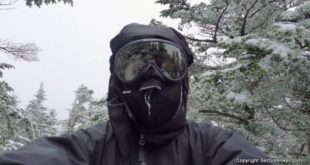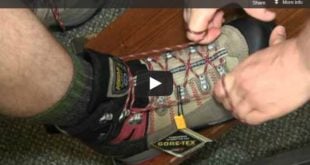These are all great questions. First off, shelters that have a removable inner tent are a great way to ease into tarp camping. A lot of tarp campers use an inner tent like this during bug season or in wet climates too. …
Read More »Frequently Asked Questions
How to Bend Backpack Frame Stays
Backpack frame stays are aluminum rods that many ultralight or specialty backpack manufacturers use in their backpacks instead of full frames. They usually slot into pockets that run down the inside of the backpack along your back and slot into the hip …
Read More »Ultraviolet Water Purification 101
Ultraviolet Water Purification Systems are a popular choice for backpackers because they’re easy to use, fast, lightweight, and don’t leave any aftertaste in your water like chemical treatments. They are not subject to freezing which destroys most water filters and can be …
Read More »How Should a Backpack Hip Belt Fit?
When buying a backpack you want to make sure that the hip belt is long enough so that it transfers most of your pack weight off your shoulders and onto your hips so that you can use the biggest muscles in your body, …
Read More »What’s the Best Canyon Hiking Footwear?
When choosing footwear for canyon hiking, you’re going to want shoes that drain well but still prevent sand from entering. They need to provide good traction over slippery and wet rock and to protect your feet from woody vegetation or cactus if …
Read More »How to Wash a Synthetic Insulated Jacket or Sleeping Bag
Regular cleaning of synthetic insulated jackets and sleeping bags is recommended to maximize their performance and warmth. However, the use of lightweight exterior shell fabrics requires delicate handling. Here are cleaning and gear maintenance tips to help you clean and restore synthetic insulated garments, …
Read More »Are Vibram Soles Good for Hiking and Backpacking?
There was a time when Vibram outsoles were the best in the business and used on the majority of hiking boots made. Vibram was the first company to make a vulcanized rubber outsole in 1937, including a standard lug pattern called the …
Read More »Camp Security – Are You Worried About Having Your Stuff Ripped Off When Backpacking?
Had a good question from a reader about camp security and keeping your gear safe during backpacking trips. For example: Do you hang your backpack up with others in the shelter? Do you leave your stove or your sleeping bag out when …
Read More »When Should You Call Off A Winter Hike?
We called off our hike up to Mt Adams (5774′) this past Monday because conditions were just too severe. With subzero temperatures, -40 to -50 degree (f) wind chills, and winds blowing over 100 miles per hour, it would have been too …
Read More »How to Wash a Down Sleeping Bag
Washing a Down Sleeping Bag Your down sleeping bag will loft better and keep you warmer if you wash it occasionally. I try to wash mine annually, but I also spend many dozens of nights out using it each year. If you don’t …
Read More »Hiking Boot Lacing Techniques
If you wear hiking boots and get blisters when you go hiking or if your boots don’t fit as well as you’d like, there are a handful of powerful hiking boot lacing techniques that you can use to dial in a good …
Read More »What is Fastpacking?
Fastpacking is a hybrid form of backcountry travel—think of it like a combination between trail running and backpacking—which means there’s no simple, satisfying answer to this question. Fastpacking means the athlete can cover big miles in the backcountry with a combination of …
Read More »What are Zero-Drop Hiking Shoes
Zero-drop shoes have become popular with hikers and backpackers over the past few years, thanks in part to Altra Running Shoes, a brand known both for their oversized toe-box and zero-drop style. Before Altra, many hikers had never considered the drop of …
Read More »How to Shit in the Desert
Shit takes longer to decompose in the desert than it does in more humid places. Studies show that there can still be harmful bacteria present in the human fecal matter even after a year in the desert soil. Because of this, there …
Read More » SectionHiker.com Backpacking Gear Reviews and FAQs
SectionHiker.com Backpacking Gear Reviews and FAQs 












